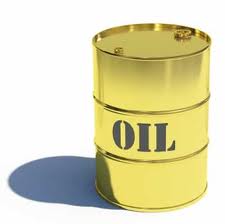Search Options Trading Mastery:
Oil Futures Options
Follow the Price of Oil and Profit with Oil Futures Options
The existence of unique financial instruments known as oil futures options allow many investors to turn this precious resource into an investment that brings a return without all of the risk normally found in the futures market. The distinction between futures and options are at the heart of this opportunity.
Oil futures options differ from regular oil futures primarily because of the clause in the options contract which gives the holder the right but not the obligation, to buy a certain quantity of oil at a set time in the future. This provides the buyer of an option some insurance against unforeseen activity in the market which sends prices suddenly up or down. In any case, the buyer can only lose what he or she initially invested - the option premium paid. With a future, the losses are potentially much greater. Also, options holders never have to worry about a margin call. However, these advantages are no longer available once the market closes on the expiration date of the contract.
Such options are divided into two categories. These categories are known as call options and put options. Bullish traders, who think that oil prices are going to rise, will buy call options. These allow the trader to control the rights to a commodity such as oil at a fixed price which they hope will be lower than the actual value of the commodity at some point in the duration of the contract. Put options allow the trader to sell the contracts at a fixed price, even if the market value of the oil has dropped below that price.

Oil Futures Options Vs. Regular Oil Futures
These options are not without risk, or they would not be so lucrative. They offer the ability to limit loss and give the buyer some additional leverage. However, they can also expire worthless and lose the buyer's entire investment.
In addition to this leverage and limitation against losses, oil futures options also offer a lot of flexibility in your investment. They are wisely used in combination with regular futures to minimize loss and maximize gain. They also provide an excellent sense of insurance during times of high volatility.
However, these options also suffer from time decay. The value of an out-of-the-money options contract lessens as time passes. Since you can choose to switch from buying options to selling options, this risk is somewhat lessened.
Oil futures options are traded on the New York Mercantile Exchange (NYMEX) and one option contract covers 1,000 barrels of oil and their prices are quoted in dollars and cents per barrel. Since one barrel of oil is 42 gallons, one option contract covers 42,000 gallons of oil.
Oil futures and their options are quoted on the exchange as:
1. NYMEX Light Sweet Crude
2. NYMEX Brent Crude
What Affects the Price of Oil
Oil is a commodity in huge demand, not only for machinery but also heating. Consequently, the price of heating oil generally rises during the northern hemisphere winter. But the price of crude oil is also affected by a number of geopolitical factors such as war in the Middle East, recessions and natural disasters such as hurricanes, earthquakes and the like. When the price of oil becomes volatile due to an uncertain political climate, option strategies such as straddles and strangles can really bring home the bacon. Keeping abreast of the factors that contribute toward fluctuting oil prices really pays.
Once you understand the relationship between oil futures and their associated options contracts, you can employ option trading strategies that either focus exclusively on only options contracts ... OR on a combination of holding futures contracts and options for the same commodity - in which you can take either a "buy" or "sell" position.
**************** ****************
Return to Commodity Options Trading Contents Page
Go to Option Trading Homepage














New! Comments
Have your say about what you just read! Leave me a comment in the box below.